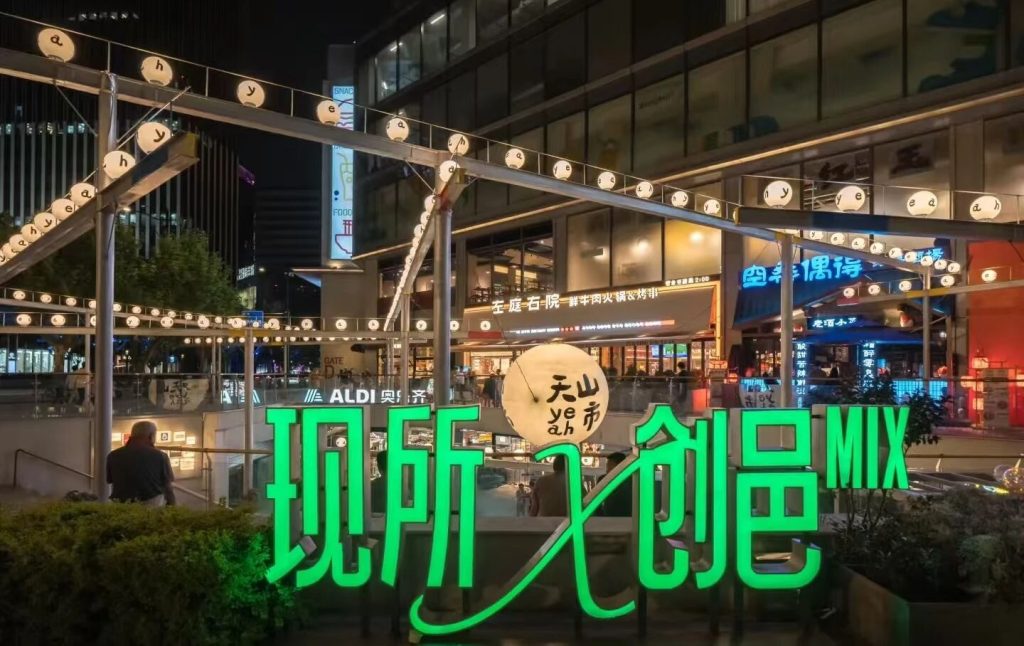How to Transform ‘Old, Small, and Broken’ Spaces into Social Hubs for Young People? 5 Proven Strategies to Revitalize Community Commerce!
The “Midlife Crisis” of Community Commerce!”The supermarket at the corner of my neighborhood has closed down, the bubble tea shop is now a health product store, and even the breakfast shop has put up a ‘for sale’ notice.” — This is not the dilemma of a small town, but the real situation of countless community businesses in major cities like Beijing, Shanghai, Guangzhou, and Shenzhen.Traditional community commerce is undergoing a “midlife crisis”: repetitive stores, outdated space designs, and aging consumer scenarios have caused young people, who crave novelty, to avoid these places. However, on the other side, renovation projects like Tokyo’s GRAND TREE, Shanghai’s Xiansuo, and Chengdu’s Regular Yuan Ye have become hot spots for young people to check in.The way out for community commerce is not to “give up,” but to use design to tap into the social desires of Generation Z. What young people want is not just “convenience,” but “social capital.” The old logic of community commerce was to “serve the residents,” but young people have already shown, through their actions, that they are willing to travel across the city just to check in at a coffee shop with great design. Therefore, the key to success is transforming “functional spaces” into “social currency machines.” For example, Xiansuo·Chuangyi MIX in Shanghai turned an old factory into a “tiered social plaza,” where it transforms from a marketplace and coffee spot by day to an outdoor cinema by night.
Young people come here not to shop but to snap photos and share them on social media: “I found a hidden gem in my community!” The formula for successful design is light and shadow art installations + movable modular furniture + open event spaces = a treasure trove of social media content for young people.”Beauty is justice,” but the real key to gaining attention is the “contrast.” Young people are tired of the oversaturation of industrial and minimalist styles and are instead drawn to “rustic chic” and “new vs. old” aesthetics. The key to a successful renovation is using “earthy designs” to create a sense of sophistication. For example, Regular Yuan Ye in Chengdu preserved the terrazzo floors and ventilation pipes from an 80s community market but suspended silver metal art installations in the air, creating a visual contrast between “street-level warmth” and “futuristic vibes.” On opening day, posts about the place flooded Xiaohongshu (Little Red Book) with over 10,000 notes. The design principle here is 70% old elements preserved + 30% surrealist design to evoke the feeling of “both familiar and unfamiliar,” triggering a desire to check in.Young People Want “Participation,” Not “Being Defined”.Generation Z rejects being “spoon-fed.” They want to define the value of a space themselves. The key to success is turning commercial spaces into an “open-ended role-playing game.”

For instance, the GRAND TREE mall in Tokyo lets customers vote on space renovations via an app: Should the central atrium next week be a “forest library” filled with greenery, or a pop-up shop with an anime theme? Young people use their votes to “grow” their ideal community.The operational logic is a monthly “space renovation crowdfunding,” where young people “invest” in the community commerce with their creativity, spending, and likes.Business Model Reorganization: Abandon “Big and Complete,” Embrace “Small Addictive”Traditional community commerce is still stuck with the old formula of “supermarket + pharmacy + vegetable market,” but young people are craving “light drinking + cute pets + healing spaces.” The key to transformation is using “addictive business models” to encourage frequent visits. The ideal business model formula is a community tavern (which turns into a role-playing game venue after 8 pm) + pet-friendly stores (serving cat-themed afternoon teas) + mini fitness pods (24-hour Pilates pods accessible with a scan).According to the 2023 Community Commerce White Paper, projects with more than three “addictive business models” have seen a 300% increase in the repurchase rate among young people.
The Ultimate Weapon: Transforming “Business” into “Empathy Communities”.Young people’s highest expectation for community commerce is: “It understands my loneliness and accommodates my liveliness.” The key to transformation is designing “empathy triggers.” For instance, in Beijing’s THE BOX, the facade features an “editable LED screen” where passersby can send bullet-screen-style confessions using their phones, creating a cyber wish wall every evening. Similarly, in Shenzhen’s Nantou Old City, a “shared kitchen” is set up at a street corner where businesses provide ingredients, and young people cook meals for their neighbors, settling up through community group payments.The Future of Community Commerce: “The Rebirth of Nearby Areas”.As e-commerce takes away “convenience” and shopping malls have saturated the hardware space, the only barrier for community commerce is becoming an emotional anchor in the “15-minute living circle” for young people.Remember this: “Young people never reject old communities; what they reject is a life that hasn’t been thoughtfully designed.”